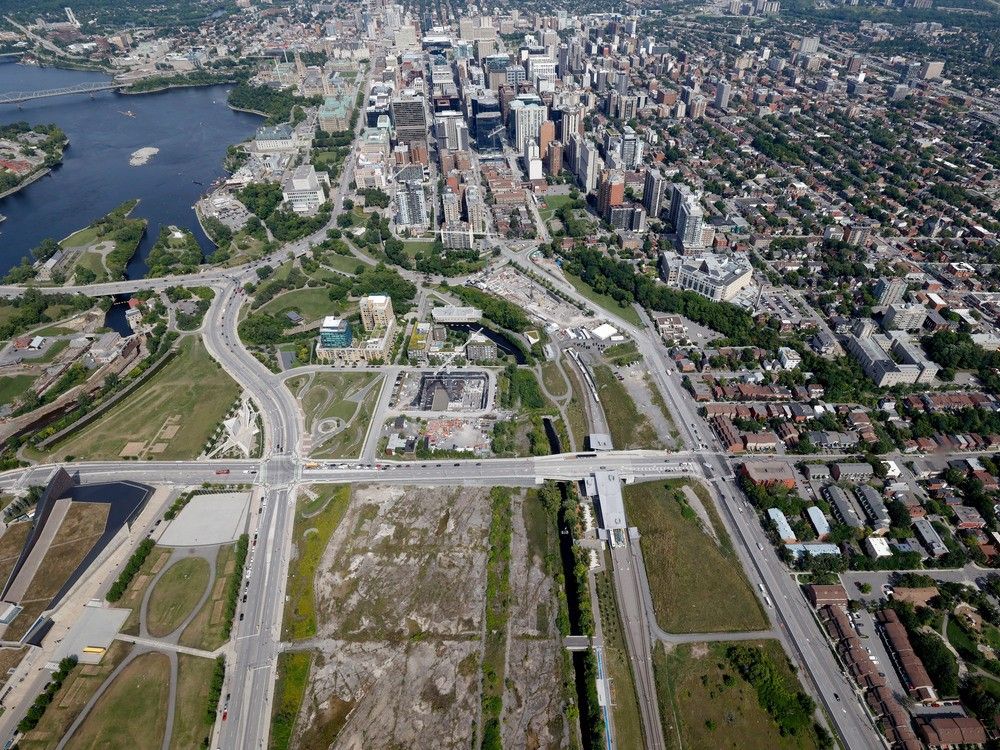Published Sep 20, 2024 • 4 minute read

New green development programs from municipalities lack consistency and it could lead to chaos
Advertisement 2
THIS CONTENT IS RESERVED FOR SUBSCRIBERS ONLY
Subscribe now to read the latest news in your city and across Canada.
- Unlimited online access to articles from across Canada with one account.
- Get exclusive access to the Toronto Sun ePaper, an electronic replica of the print edition that you can share, download and comment on.
- Enjoy insights and behind-the-scenes analysis from our award-winning journalists.
- Support local journalists and the next generation of journalists.
- Daily puzzles including the New York Times Crossword.
SUBSCRIBE TO UNLOCK MORE ARTICLES
Subscribe now to read the latest news in your city and across Canada.
- Unlimited online access to articles from across Canada with one account.
- Get exclusive access to the Toronto Sun ePaper, an electronic replica of the print edition that you can share, download and comment on.
- Enjoy insights and behind-the-scenes analysis from our award-winning journalists.
- Support local journalists and the next generation of journalists.
- Daily puzzles including the New York Times Crossword.
REGISTER / SIGN IN TO UNLOCK MORE ARTICLES
Create an account or sign in to continue with your reading experience.
- Access articles from across Canada with one account.
- Share your thoughts and join the conversation in the comments.
- Enjoy additional articles per month.
- Get email updates from your favourite authors.
Article content
When it comes to green building standards, it’s like the Wild West in Ontario, with some municipalities going off and creating their own separate rules in violation of the Ontario Building Code Act (OBCA).
Two municipalities spring to mind.
Caledon has approved a new green development standards program that sets out climate-friendly design standards that all new residential, commercial and industrial development must meet.
The program will run as a one-year pilot. All developments will have to show how their projects meet 20 different sustainability metrics in several categories before they are approved.
King Township, meanwhile, has adopted the ThinKING Green Sustainable Development Standards, which come into effect Sept. 1. The standards introduce five sustainability metrics.
Advertisement 3
Article content
All subdivision plan applications will have to address the metrics in order to be deemed complete. For example, 25 per cent of hardscaped areas such as driveways, parking lots and walkways will have to be constructed of light-coloured materials that absorb less heat from the sun.
These are just a couple of examples of municipalities going rogue and developing their own more onerous and restrictive standards.
However, these independent standards are not permitted under the OBCA. The Building Code Act clearly supersedes all municipal bylaws respecting the construction or demolition of buildings.
The OBCA is the law of the land, not the rules imposed by individual municipalities.
There are plenty of good reasons for this.
By signing up you consent to receive the above newsletter from Postmedia Network Inc.
Article content
Advertisement 4
Article content
National and provincial building codes are already in place to deal with green building standards. The standards have been properly and thoroughly vetted to ensure practices are safe.
The codes are critical as they provide predictable and uniform standards that builders must follow. They have evolved as a result of progression in building science and exhaustive cost-benefit analysis.
If individual municipalities go off script and develop their own specific guidelines, it will cause chaos in the building industry. Builders need consistency across municipalities in order to build.
Green building standards created by individual municipalities are often haphazardly implemented, geographically inconsistent with others, and merely raise the cost of building homes.
Advertisement 5
Article content
Provisions in some municipally imposed standards require developers to use certain vendors which limits competition, impedes building and can drastically inflate development costs.
Municipalities already have tools under the Planning Act and can tap site plan measures to regulate the look and character of a building. However, they aren’t allowed to set requirements for the physical construction of a building or materials, and they do not have the authority to impose code conditions that are higher than the national and provincial codes.
To properly adopt their own green development standards, municipal in-house planning staff would need to have technical competency in building science or construction practices.
Advertisement 6
Article content
RESCON has raised our concerns on the matter with the premier’s office and recently sent a letter to Municipal Affairs and Housing Minister Paul Calandra, requesting that the provincial government take the necessary actions required to ensure that municipalities rescind municipal building standards that are well beyond the parameters of their authority under the OBC.
This is a pressing and urgent matter as municipalities are moving forward in an irresponsible way.
We support the province in updating construction regulations, with the recent release of the 2024 Ontario Building Code (OBC). However, we question why individual municipalities continue to develop their own set of standards as they only gum up development approvals and escalate construction costs.
Advertisement 7
Article content
By operating outside of the parameters of the OBC, the municipalities are creating another barrier to delivering new housing at a time when we are facing the most serious housing affordability crisis ever experienced.
Latest CMHC data reveals that the City of Toronto saw 9.5 per cent fewer housing starts in the first half of this year compared to 2023. Sadly, stats in Ontario were down 10 per cent in the same period. RateHub.ca recently reported the minimum annual income required to buy an average home in Toronto was $208,950.
Despite challenging market conditions from high interest rates, exorbitant taxes, fees and levies, excessive red tape and bureaucracy, the residential construction industry has raised its game significantly and taken steps to build greener and more sustainable homes and condos.
Advertisement 8
Article content
Our developers, contractors and builders are leaders in green building in Canada and the U.S. They are doing everything to be part of the solution to climate change. They abide by the stringent specs of building codes while attempting to build homes that people can still afford.
The approach to green building standards must be measured and consistent. The government must rein in municipalities that attempt to operate outside the parameters of the building code. They’re exceeding their authority and will only make it more difficult to hit housing targets.
Richard Lyall is president of the Residential Construction Council of Ontario (RESCON). He has represented the building industry in Ontario since 1991. Contact him at [email protected].
Article content
.png)
 1 hour ago
7
1 hour ago
7

































 Bengali (BD) ·
Bengali (BD) ·  English (US) ·
English (US) ·